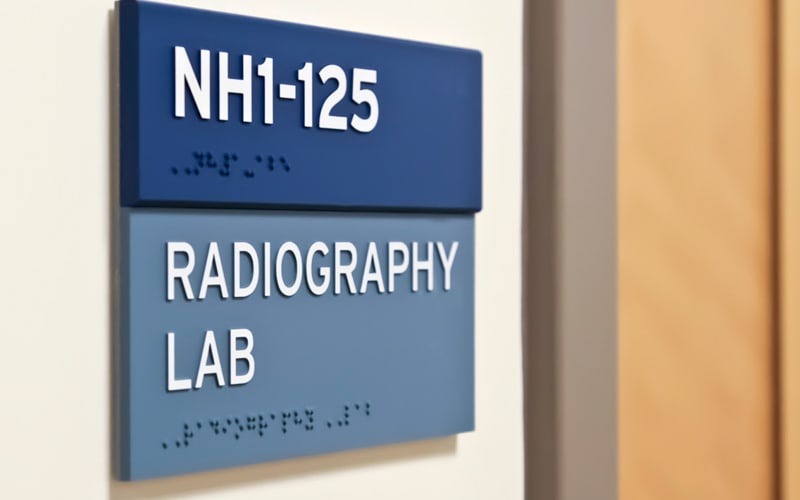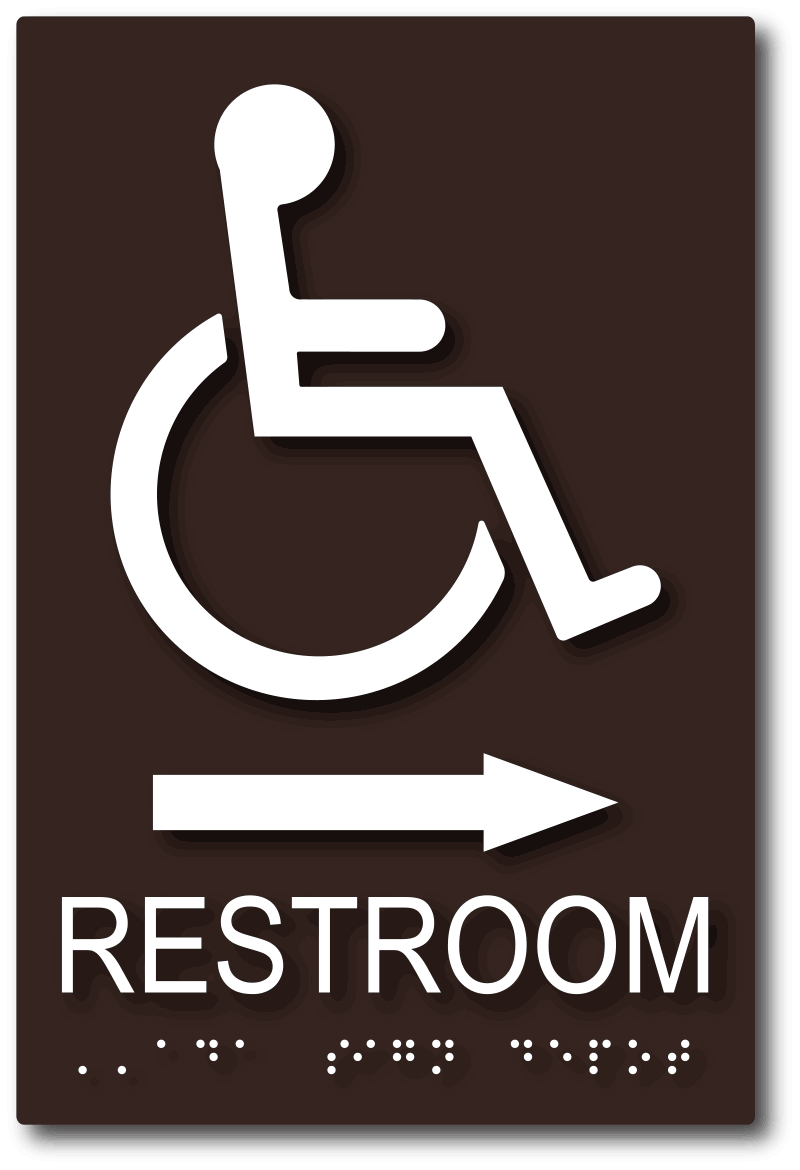Check out the Relevance of ADA Signs in Public Spaces
Check out the Relevance of ADA Signs in Public Spaces
Blog Article
ADA Signs: Making Certain Ease Of Access and Conformity in Public Spaces
ADA signage plays a crucial function in assuring accessibility and compliance within public areas, substantially contributing to an inclusive environment for individuals with handicaps. As we check out the nuances of ADA signage, from tactile functions to develop intricacies, it's vital to consider how these components coalesce to copyright the civil liberties of all individuals.
Significance of ADA Signage
In modern-day culture, the value of ADA signage extends past plain conformity with legal requireds to embody a dedication to inclusivity and accessibility for all people. These indicators are crucial in developing settings where people with specials needs can navigate public rooms with the exact same convenience and self-reliance as those without disabilities. By giving clear and standard info, ADA signage ensures that everybody can access centers, services, and details without barriers.
The importance of ADA signage hinges on its ability to boost the lifestyle for individuals with disabilities by advertising equivalent access. It eliminates the obstacles that could otherwise impede their capability to take part fully in community life. These indications serve as noticeable indicators of an organization's commitment to diversity and equality, mirroring wider societal values that promote the legal rights and self-respect of all people.
In addition, ADA signage plays a critical duty in public safety and security. By leading individuals to departures, washrooms, and various other necessary facilities, it makes sure that all individuals, despite physical capacity, can leave safely throughout emergency situations. In summary, ADA signs is not just a regulative need yet an effective device for fostering a comprehensive and fair culture.
Crucial Element of Compliance

Positioning is essential; signs should be mounted in areas that are conveniently noticeable and obtainable. Normally, signs needs to be installed in between 48 and 60 inches from the ground to make certain access for both standing and mobility device customers. Responsive elements, such as Braille, are important for individuals with visual impairments, providing crucial info in a non-visual layout.
High-contrast shades between the message and background are essential to improve readability for individuals with reduced vision. The ADA mandates certain contrast ratios to ensure quality. Furthermore, character size is a key factor to consider, with minimal height needs determined by the viewing distance to make certain readability from numerous angles.
Design Factors To Consider for Access
Creating easily accessible signs requires a meticulous method to ensure it meets the requirements of all individuals, specifically those with disabilities. This involves taking into consideration different style components that boost readability and use. Key elements include the option of font, color comparison, and responsive functions. Font styles ought to be sans-serif, with basic and clear letterforms, to help with very easy reading. The dimension of the text is equally essential, with ADA guidelines suggesting a minimum height based on seeing distance to make sure legibility.
Contrasting shades in between message and background are necessary for presence, particularly for people with visual impairments. A high comparison ratio helps identify the text from its history, boosting readability under numerous illumination conditions. Furthermore, tactile elements, such as Braille and elevated characters, are crucial for people who are blind or have low vision. These elements need to be found at a consistent height and position to make sure easy accessibility and comprehension.
Moreover, the positioning of signage plays a significant role in accessibility. Signs need to be mounted in places that are easily obtainable and unhampered. Making sure that signage is installed at appropriate heights and angles allows all customers, including those making use of wheelchairs, to interact with them properly.
Typical Mistakes to Avoid

Another common error is the incorrect placement of signs. ADA guidelines specify accurate elevation and location demands to guarantee that indicators are reachable and easily visible by all individuals, consisting of those utilizing wheelchairs. Ignoring these guidelines not only interferes with availability yet likewise takes the chance of non-compliance with legal requirements.
Furthermore, inadequate comparison between message and background is a regular oversight. Ample contrast is important for readability, especially for people with low vision. Developers occasionally select shades that are visually Read More Here appealing however do not have the needed comparison, rendering the text difficult to recognize.
Lastly, some designers fall short to include responsive elements, such as Braille, which are essential for people who are blind. Omitting these features not only results in non-compliance with check out this site ADA regulations but likewise limits accessibility for a section of the population that relies upon tactile info.
Future Trends in Signs
Advancements in technology and enhancing understanding of inclusivity are forming the future fads in signs layout. As society becomes extra conscious of varied requirements, the combination of wise modern technologies into signage is getting traction. Digital signs, as an example, is progressing to include interactive features and real-time updates, which can be essential in providing dynamic details in public areas. These indicators usually include touch screens or gesture-based controls, making it possible for customers to browse content tailored to their particular needs.
An additional emerging fad is the application of augmented truth (AR) to boost user experience. AR-enabled signs can overlay digital details onto the physical atmosphere, providing visually impaired individuals with auditory or haptic responses. ADA Signs. This technology not just enhances ease of access yet also develops an engaging experience for all individuals
Sustainability is additionally a considerable factor affecting signs trends. Eco-friendly materials and energy-efficient lighting options are being prioritized to line up with global ecological objectives. Furthermore, innovations in products science are leading to the advancement check over here of even more weather-resistant and long lasting indicators.
Final Thought
ADA signs plays an important function in assuring ease of access and conformity within public rooms by including tactile components, high-contrast colors, and tactical placement. The adherence to ADA standards not just promotes secure navigating for people with specials needs but likewise indicates a company's devotion to diversity and inclusivity. By preventing common errors and embracing future patterns, public spaces can proceed to progress these worths, making certain that the civil liberties and dignity of all people are appreciated and maintained.
ADA signage plays an important duty in assuring availability and compliance within public rooms, significantly adding to an inclusive atmosphere for individuals with handicaps. As we discover the nuances of ADA signage, from responsive functions to design intricacies, it's essential to think about how these aspects integrate to support the rights of all customers.In contemporary society, the significance of ADA signs extends beyond plain conformity with lawful mandates to symbolize a commitment to inclusivity and ease of access for all people. By offering clear and standard information, ADA signs makes certain that everybody can access centers, solutions, and info without barriers.
ADA signage plays a vital duty in guaranteeing availability and conformity within public areas by including responsive aspects, high-contrast shades, and critical positioning. (ADA Signs)
Report this page